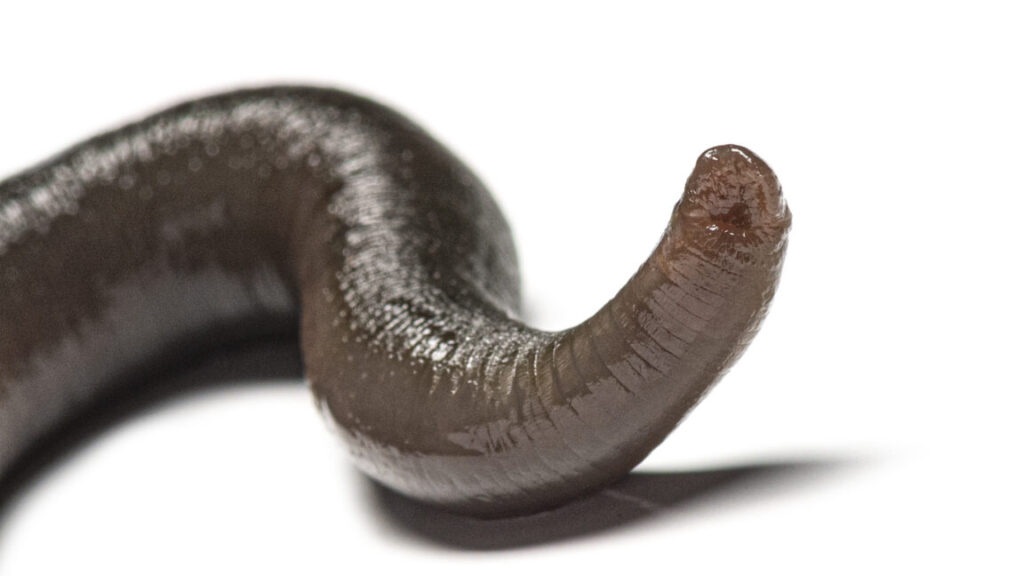Since the dawn of civilization, leeches have been firmly attached to medicine. Therapeutic bloodsuckers are seen in murals decorating the tombs of 18th dynasty Egyptian pharaohs. They got their earliest written recommendation in the 2nd century BC by Greek poet and physician Nicander of Colophon. He introduced the “blood-loving leech, long flaccid and yearning for gore,” as a useful tool for sucking out poison after a bite from a poisonous animal. “Let leeches feed on [the] wounds and drink their fill,” he wrote. Ancient Chinese writing touted their medicinal potential, too, as did references in Sanskrit.
Galen, the physician for Roman Emperor Marcus Aurelius, supported using leeches to balance the four humors (i.e. blood, phlegm, and yellow and black bile) and therefore treat ailments—as initially outlined by Hippocrates. Leeches, doctors found, provided a method for less painful, localized, and limited bloodletting. We now understand that leeches can release an anesthetic to prevent pain and a powerful anticoagulant, hirudin, to prevent clotting and keep blood flowing.
In the centuries since the Roman era, leeches’ popularity only grew. They were used to treat everything from gout to liver disease, epilepsy, and melancholy. The very word “leech” is derived from the Anglo-Saxon word “laece,” which translates to “physician.”



